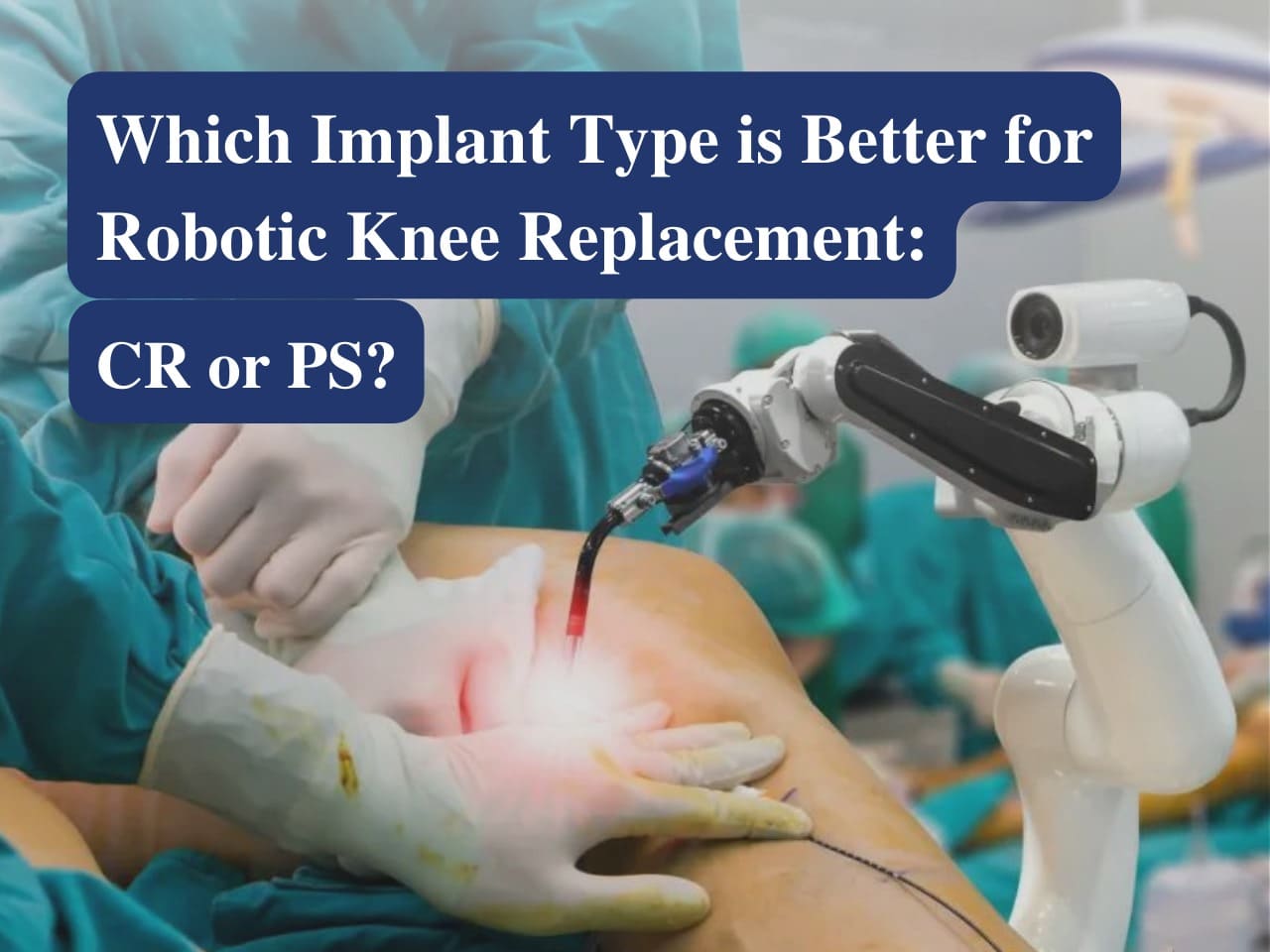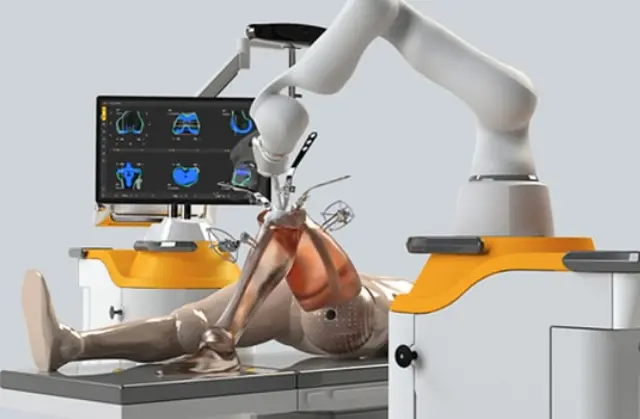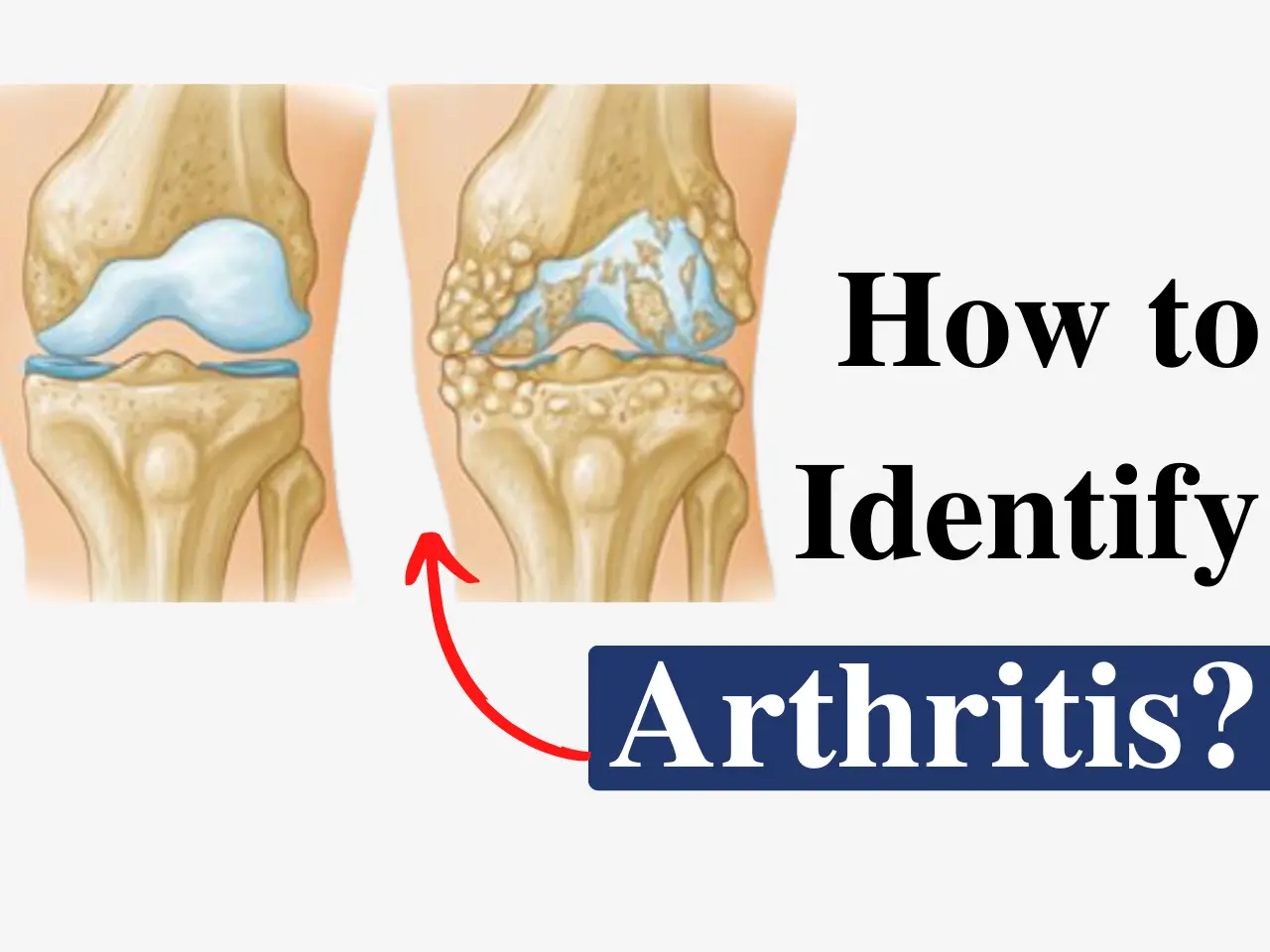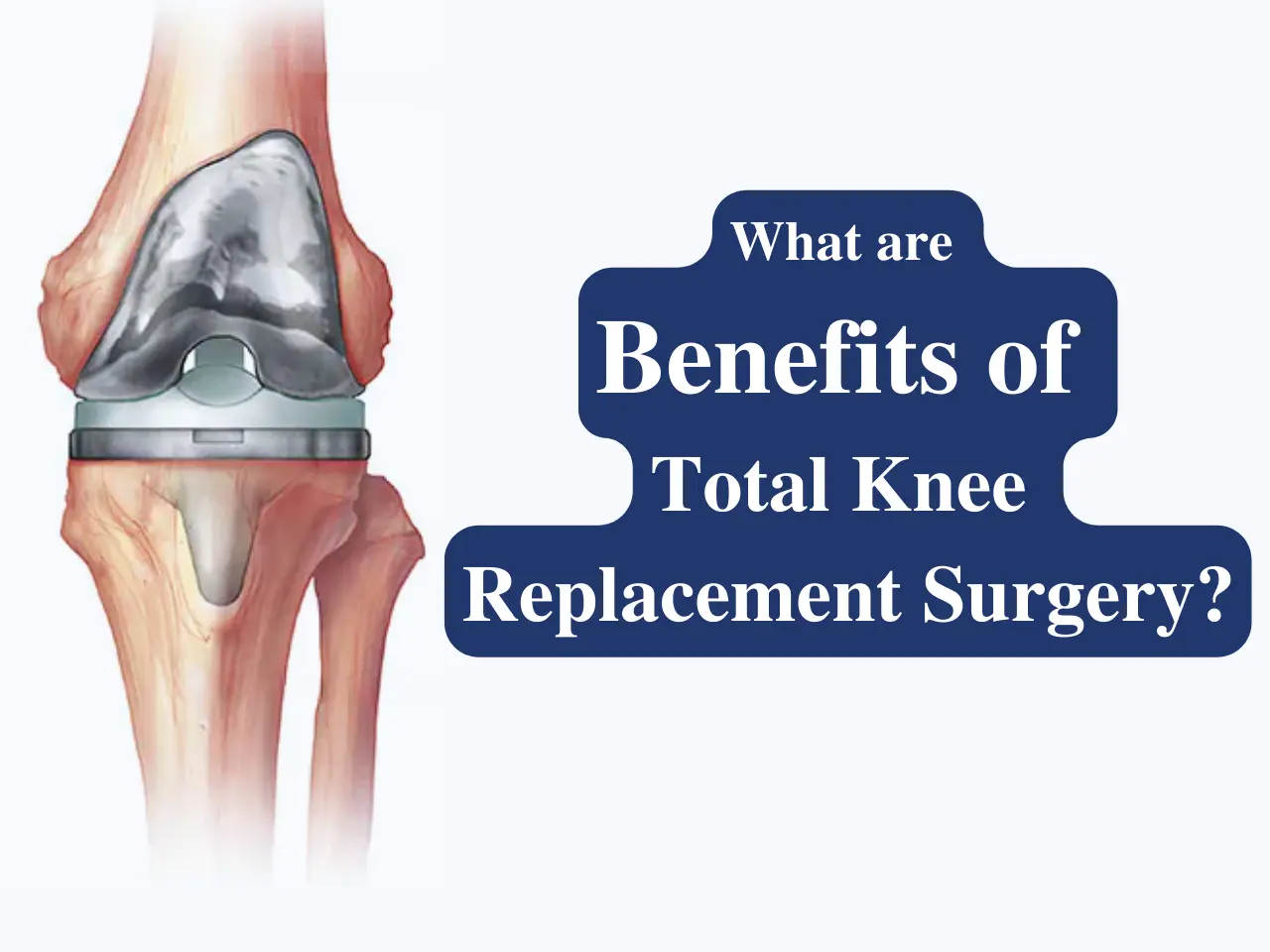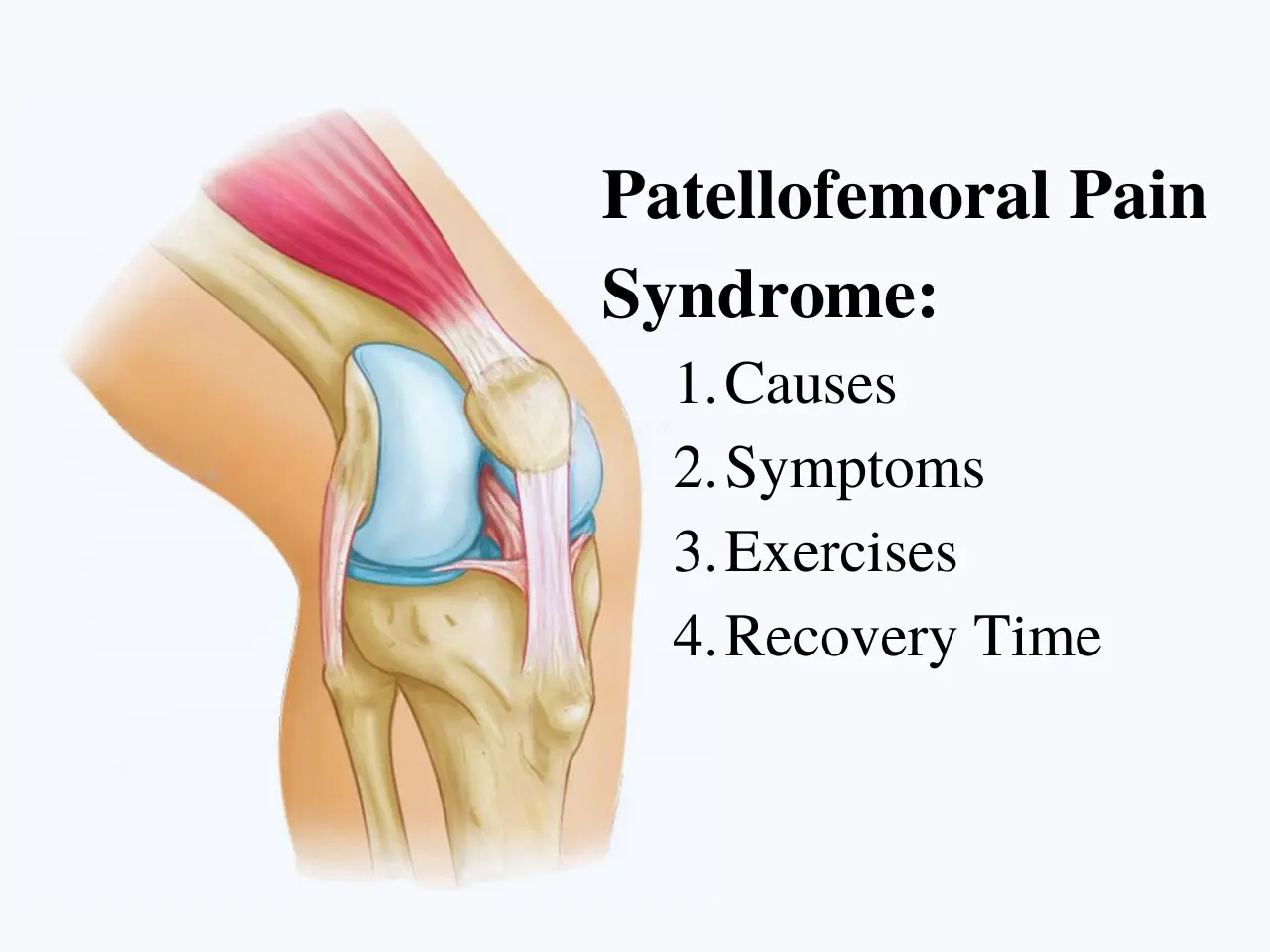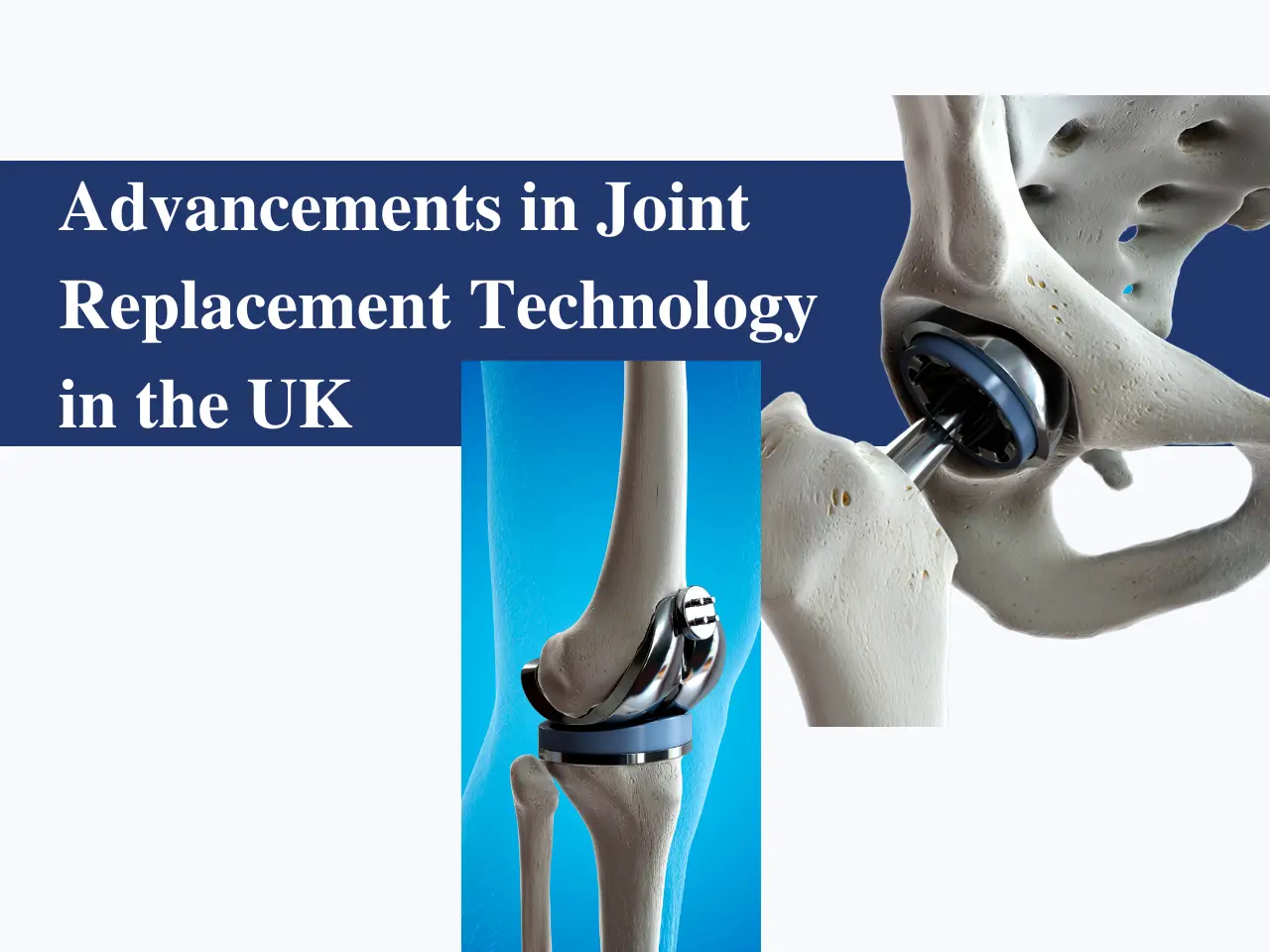Which Implant Type is Better for Robotic Knee Replacement: CR or PS?
Robotic knee replacement surgery has revolutionized the way knee replacements are performed, offering greater precision, faster recovery times, and improved outcomes. However, one of the most critical decisions in this surgery is choosing the right implant type: Cruciate Retaining (CR) or Posterior Stabilized (PS).
Each has its own set of advantages and potential drawbacks, and the choice between them can significantly impact the success of the surgery.
In this blog, we’ll explore the differences between CR and PS implants, their suitability for different patients, and how robotic assistance can optimize outcomes.
As one of the best knee replacement surgeons in Cheshire, U.K., Mr. Nikhil Pradhan provides expert insights into which implant type may be better for you.

What is Robotic Knee Replacement?
Robotic knee replacement is a cutting-edge surgical technique that utilizes robotic systems to assist surgeons in performing knee replacement procedures with unparalleled accuracy.
The robotic system provides a 3D model of the patient’s knee, allowing for precise planning and placement of the implant.
This technology enhances the surgeon’s ability to make adjustments during surgery, ensuring that the implant fits perfectly and functions optimally.
The result is often a more natural-feeling knee, reduced pain, and a quicker return to normal activities.
The Importance of Choosing the Right Implant
Choosing the right implant is a critical component of a successful knee replacement. The implant not only needs to fit the patient’s anatomy perfectly but also needs to accommodate their lifestyle and activity level.
Two of the most common types of implants are Cruciate Retaining (CR) and Posterior Stabilized (PS). Understanding the differences between these implants, and how they interact with the knee’s natural structures, is essential for achieving the best possible outcome.
Cruciate Retaining (CR) Implants
What is a CR Implant?
A Cruciate Retaining (CR) implant is designed to preserve the posterior cruciate ligament (PCL), one of the two key ligaments in the knee that control movement. In a CR knee replacement, the PCL is left intact, and the implant is designed to work in harmony with this ligament. This approach aims to maintain more of the knee’s natural movement patterns, offering a more natural feel post-surgery.
Advantages of CR Implants
- Natural Knee Movement: Since the PCL is preserved, CR implants allow for more natural knee mechanics, which can be particularly beneficial for patients who are highly active.
- Stability: By retaining the PCL, the knee retains some of its natural stability, which can contribute to a more secure feeling post-surgery.
- Suitable for Certain Patients: CR implants are often recommended for patients with a healthy PCL and those who prefer a more natural knee movement after surgery.
Potential Drawbacks of CR Implants
- Not Suitable for All Patients: In cases where the PCL is damaged or weakened, a CR implant may not provide adequate stability.
- Complexity in Surgery: The retention of the PCL can make the surgery slightly more complex, requiring a surgeon with significant experience in CR knee replacements.
- Comparison with PS Knee Replacement: While CR implants preserve the PCL, they may not offer the same level of stability and control as PS implants, especially in patients with more severe knee deformities.
Posterior Stabilized (PS) Implants
What is a PS Implant?
A Posterior Stabilized (PS) implant is designed to replace the function of the PCL with a cam and post mechanism. This mechanism provides stability and support, allowing the knee to function smoothly even without the PCL.
PS implants are often used in cases where the PCL is not intact or when additional stability is required.
Advantages of PS Implants
- Enhanced Stability: PS implants are designed to provide more stability, particularly in knees where the PCL is damaged or absent. This can be particularly beneficial for patients with severe knee deformities.
- Greater Range of Motion: The cam and post mechanism in PS implants can allow for a greater range of motion, which is important for patients who need more flexibility in their daily activities.
- Ideal for Certain Patients: PS implants are often recommended for patients who have a weakened or damaged PCL or those who require more support due to their activity level or knee condition.
Potential Drawbacks of PS Implants
- Loss of Natural Knee Mechanics: Since the PCL is not retained, the knee may not move as naturally as it would with a CR implant.
- Potential for Wear and Tear: The mechanical components of PS implants may be more prone to wear and tear over time, particularly in very active patients.
- Comparison with Cruciate Retaining Knee Replacement: While PS implants offer greater stability, they may not provide the same level of natural movement as CR implants, which can be a consideration for patients who prioritize a more natural knee feel.
Is PS or CR Better for Knee?
The choice between CR and PS implants is highly individual and depends on various factors. Robotic knee replacement surgery enhances the success of both implant types by allowing for precise placement and alignment. Robotic systems can tailor the surgery to the patient’s unique anatomy, ensuring that the chosen implant—whether CR or PS—fits perfectly and functions optimally.
Ultimately, the best choice depends on the patient’s specific needs, and consultation with an experienced knee replacement surgeon, like Mr. Nikhil Pradhan, is essential for making an informed decision.
The Role of Robotic Knee Replacement
Robotic knee replacement technology has revolutionized the field of orthopaedics. It offers unparalleled precision and accuracy in implant placement, leading to improved outcomes for both CR and PS implants.
Benefits of robotic knee replacement for both CR and PS implants:
- Enhanced implant placement accuracy
- Reduced risk of complications
- Faster recovery times
- Improved patient satisfaction
Factors Influencing Implant Choice
Selecting the right implant type is a complex decision that involves various factors:
Patient Factors
- Age, weight, and overall health: These factors influence the implant choice and the success of the surgery.
- Level of activity and desired lifestyle: Active individuals may prefer CR implants for a more natural feel, while those seeking stability might opt for PS.
- Bone quality and ligament condition: The state of the bone and ligaments significantly impacts the implant decision.
Surgeon Expertise
The expertise of the surgeon is crucial in achieving optimal outcomes. A skilled surgeon can effectively perform both CR and PS procedures.
- Importance of surgeon experience in both CR and PS procedures: A surgeon with experience in both types of implants can offer informed recommendations.
- The role of patient-surgeon communication in decision-making: Open communication between the patient and surgeon is essential for making the right choice.
Implant Technology
Advancements in implant technology have led to improved designs and materials.
- Advancements in implant design and materials: Newer implants offer enhanced durability and performance.
- The impact of implant technology on outcomes: Improved implant technology contributes to better patient outcomes.
Choosing the Right Implant for You
Making the decision between CR and PS implants requires careful consideration.
- Consultation with a knee replacement surgeon: A thorough evaluation by a qualified surgeon is essential.
- Weighing the pros and cons: Consider the advantages and disadvantages of each implant type based on your individual needs and goals.
- Making an informed decision: Ultimately, the choice should be made in collaboration with your surgeon after careful consideration of all factors.
Conclusion
The decision between CR and PS implants is highly individualized. There is no one-size-fits-all answer. A qualified knee replacement surgeon, like Mr. Nikhil Pradhan, can provide expert guidance based on your specific needs and goals.
Mr. Nikhil Pradhan is a renowned knee replacement surgeon in Cheshire, UK, with extensive experience in robotic knee replacement. His expertise can help you make informed decisions about your implant choice.
FAQs
Is PS or CR better for knee?
The answer depends on individual patient factors such as knee condition, activity level, and the presence of a healthy PCL. Both have distinct advantages, with CR providing more natural movement and PS offering enhanced stability.
What is Cruciate Substituting Knee Replacement?
Cruciate substituting knee replacement refers to the use of PS implants that substitute the function of the PCL, providing stability through a cam and post mechanism.
How does robotic knee replacement enhance the outcomes for CR and PS implants?
Robotic knee replacement allows for precise planning and placement of CR and PS implants, ensuring that they fit the patient’s anatomy perfectly and function optimally. This precision leads to better outcomes, faster recovery, and higher patient satisfaction.

